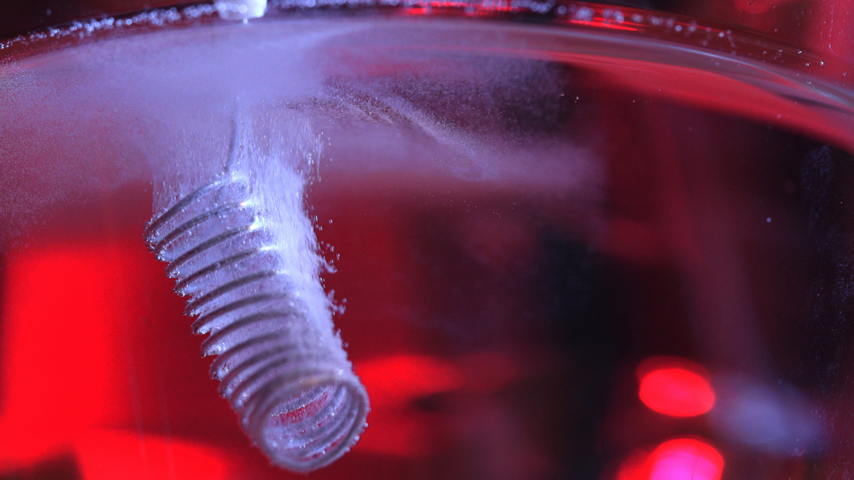New Hydrogel Removes Carbon Dioxide from Ambient Air
New Hydrogel Removes Carbon Dioxide from Ambient Air


Researchers at the Massachusetts Institute of Technology have developed a plant-based hydrogel with a porous structure that captures carbon dioxide from gases and even ambient air.
Carbon capture and sequestration (CCS) consists of emissions-mitigation technologies to counter the impacts of climate change. However, current methods have their limitations—for example, the standard approach relies on aqueous amine solutions to extract carbon dioxide from flue gases.
“Although the aqueous amine scrubbing process is industrially mature, it suffers from low energy efficiency and inferior stability,” said Youhong Guo, a postdoctoral associate in the Department of Chemical Engineering at Massachusetts Institute of Technology, who works with professor of chemical engineering Alan Hatton. And although sorbent-based CCS systems have potential, challenges include limited CO2 uptake at dilute concentrations and difficulty in regeneration.
While developing a gel film to capture water vapor from the thin air in Hatton’s lab at MIT, Guo suddenly realized that “structured gels could be a good fit to interact with air to capture its carbon dioxide,” she said. This “aha!” moment inspired Guo to develop a new type of sustainable carbon capture hydrogel film (SCCH) that is effective in capturing CO2—even from dilute sources such as ambient air. Once commercialized, this system should contribute toward achieving decarbonization goals around the world.
Pre-captured moisture
Guo created a renewable, inexpensive biomass gel network consisting of konjac glucomannan and hydroxypropyl cellulose, facilitating hierarchically porous structures for active CO2 transport and capture. This structure promotes transportation of CO2 and provides easy access to the polyethylenimine amine sites inside the hydrogel that chemically bind with the CO2. The gel network relies on sunlight to drive carbon capture and can operate efficiently across a wide range of relative humidities.
Pre-captured moisture in the hydrogel significantly enhances CO2 binding by forming water molecule-stabilized zwitterions (ions possessing both positive and negative electrical charges) that improve amine utilization. This extra moisture creates an uptake of about 4.5 mmol/g from 1-15 percent CO2 at room temperature and pressure. The hydrogels can even capture up to 3.6 mmol/g from just 400 ppm of CO2, the concentration present in ambient air.
Become a Member: How to Join ASME
“One of the biggest surprises was that the carbon dioxide uptake can be tripled with humid air, which is, most of the time, considered harmful in carbon capture processes for sorbent materials,” said Guo. Because of the thermoresponsive nature of the hydroxypropyl cellulose, SCCHs can release over 80 percent of the captured CO2 at a temperature of around 60 °C within about an hour, without vacuum conditions. This temperature is achievable through solar power, making the process even more sustainable.
Of special interest to mechanical engineers, Guo added, “is how a dual-mode device can be powered by both mild electrical heating and solar energy. The idea of solar-assisted desorption should be of interest to other mechanical engineers working in similar research fields.”
Applications abound
Guo has developed sustainable carbon-capture hydrogels with excellent CO2 uptake at room temperature. “The low regeneration temperature at 60 °C enables solar-powered regeneration, making SCCHs a key ally in meeting global decarbonization targets,” said Guo.
Guo indicates the process of scaling-up her new CCS process should be simple and affordable. “These hydrogels can be made using commercially available materials at a low cost, dissolved in water, poured into molds, and then subjected to a freeze-drying process,” she said. Once placed outside and pretreated with captured moisture from the air, the hydrogels can begin to capture CO2 from the atmosphere.
The next research steps for Guo will target materials and devices. “For materials,” she said, “increasing the kinetics of sorption and desorption would be a great direction. For the device, we hope to develop novel packaging designs for scale-up as well as more efficient dual-mode devices.”
More for You: Energy Blog: Carbon, Carbon Everywhere
Although no companies have contacted Guo yet about her new technology, she believes her system has the potential to be commercialized in the future. It also has potential applications in other fields—for example, “this hydrogel framework can be used to load any other types of sorbents or functionalize other chemical active groups for fast and energy-saving capture of other harmful gases, and vapor for water harvesting,” she added.
Ultimately, to further combat climate change, Guo wants to reduce even more the energy consumed during this CCS process. "Lowering energy consumption is a key focus in terms of mitigating greenhouse gas emissions,” she said. “While the hydrogel films already represent a significant advance, integration into carbon capture systems will require solving additional challenges around cost-effectiveness and avoiding generation of more pollution.”
Mark Crawford is a science and technology writer in Corrales, N.M.



